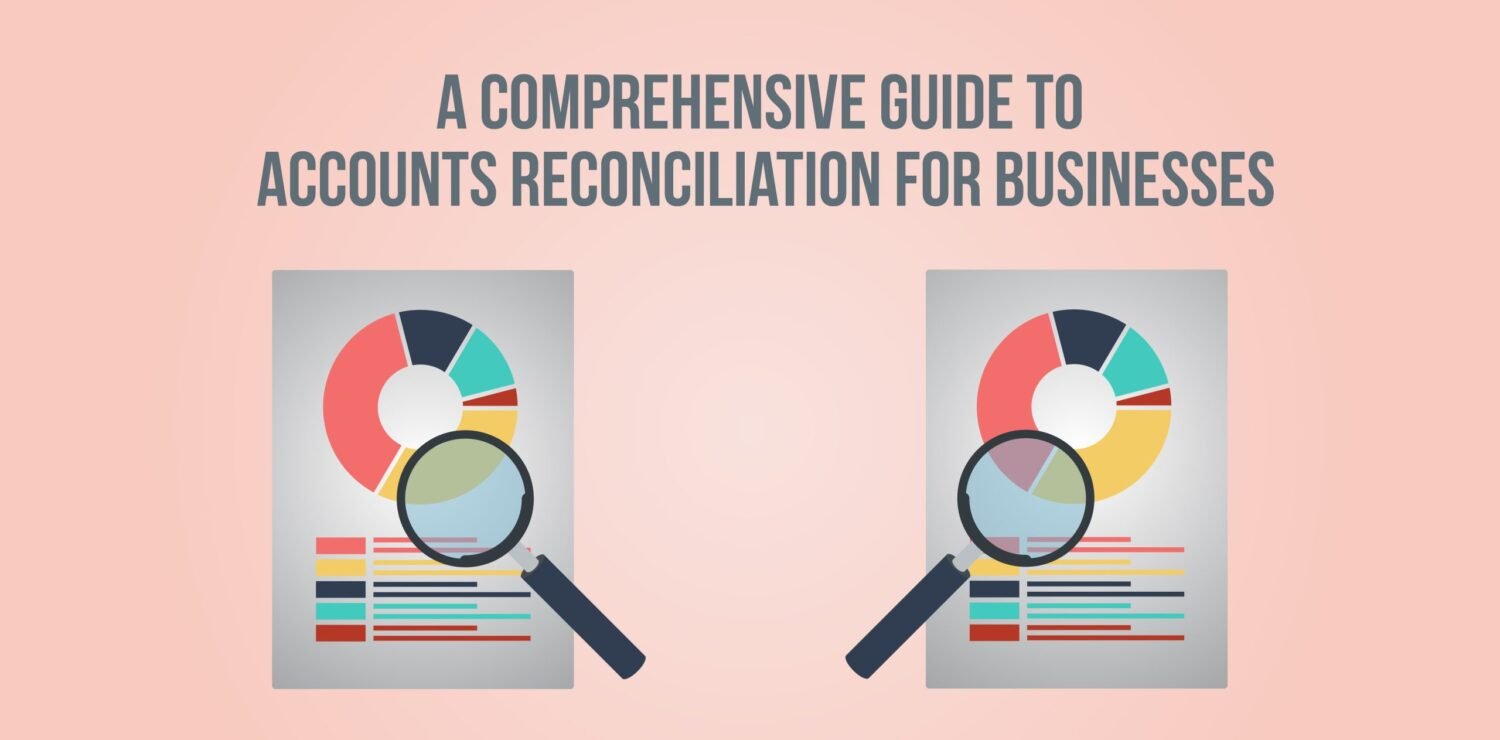
In the world of finance and accounting, accuracy is everything. A minor error in the books can lead to major confusion down the line. One of the most critical practices that ensures financial integrity is account reconciliation. Whether you’re a small business owner, a corporate finance officer, or an accounting professional, understanding the importance and process of account reconciliation is crucial.
In this comprehensive guide, we’ll cover everything you need to know about account reconciliation—from its definition to its benefits, types, best practices, and common challenges. By the end, you’ll have a solid grasp of how this practice contributes to a healthier financial ecosystem for any business.
What is Account Reconciliation?
Account reconciliation is the process of comparing two sets of financial records to ensure they are accurate and consistent. Typically, this means comparing internal records (like your general ledger) with external records (like bank statements) to verify that they match.
Reconciliation ensures that all transactions are recorded properly, and any discrepancies are investigated and resolved. It’s a foundational component of good financial hygiene and is essential for accurate reporting, compliance, and strategic planning.
Why is Account Reconciliation Important?
Reconciliation is more than just a routine accounting task—it’s a vital control mechanism that protects your business from errors and fraud. Here’s why it’s so important:
1. Error Detection
Typos, duplications, or missing entries can occur in any system. Regular reconciliation helps detect these issues before they escalate.
2. Fraud Prevention
Reconciling accounts helps spot unauthorized or suspicious transactions early, acting as a defense against internal and external fraud.
3. Regulatory Compliance
Maintaining accurate financial records is a legal requirement. Reconciliation ensures you’re compliant with tax laws and accounting standards.
4. Accurate Financial Reporting
Reliable financial statements depend on reconciled data. This supports informed decision-making and builds investor trust.
5. Cash Flow Management
Reconciliation helps you understand your actual cash position, allowing for better liquidity management and strategic planning.
Types of Account Reconciliation
There are several types of account reconciliations businesses perform regularly. Each serves a different purpose and targets a specific area of your financial data.
1. Bank Reconciliation
The most common form, this involves matching your company’s bank statements with your internal cash records.
2. Customer Reconciliation
Also known as accounts receivable reconciliation, this compares your records of customer invoices and payments with their statements.
3. Vendor Reconciliation
This involves comparing your accounts payable records with vendor statements to ensure you’ve recorded all purchases and payments accurately.
4. Intercompany Reconciliation
Used in large organizations with multiple entities, this process reconciles transactions between two or more divisions of the same parent company.
5. General Ledger Reconciliation
This ensures that balances in individual accounts match the corresponding balances in the general ledger.
The Account Reconciliation Process: Step-by-Step
Reconciling accounts might seem complex, but it typically follows a clear sequence of steps:
Step 1: Collect Financial Records
Gather all relevant documents such as bank statements, internal ledgers, invoices, receipts, and transaction logs.
Step 2: Compare Balances
Compare internal records with external statements. Look for any mismatches between the two.
Step 3: Identify Discrepancies
Investigate any inconsistencies. These could be due to timing differences, errors, or unrecorded transactions.
Step 4: Adjust the Records
Make journal entries to correct errors or account for outstanding transactions like bank fees, interest, or uncashed checks.
Step 5: Document the Reconciliation
Keep a record of the reconciliation for future reference. This is essential for audits and compliance checks.
Step 6: Review and Approve
Have a second set of eyes review the reconciliation. Approval from a supervisor or auditor ensures accountability and accuracy.
Common Challenges in Account Reconciliation
Even experienced finance teams face obstacles during the reconciliation process. Here are some common issues:
-
Missing Documentation: Lost invoices or receipts can delay reconciliation.
-
Timing Differences: Transactions may appear in different periods on different records.
-
Human Error: Manual data entry often results in mistakes.
-
High Transaction Volume: Large businesses can struggle to reconcile thousands of transactions efficiently.
-
Software Limitations: Outdated or basic accounting software may lack reconciliation features.
Best Practices for Effective Account Reconciliation
To make the reconciliation process smoother and more effective, consider these best practices:
1. Automate Where Possible
Use accounting software with reconciliation features. Automation speeds up the process and reduces human error.
2. Reconcile Frequently
Don’t wait until the end of the month. Weekly or even daily reconciliations help catch issues early.
3. Maintain Detailed Records
Keep all supporting documents organized and accessible. This saves time and provides evidence in case of audits.
4. Create a Reconciliation Checklist
Standardize the process with a checklist to ensure consistency and completeness.
5. Train Your Team
Ensure your accounting team is trained in reconciliation techniques and tools. A knowledgeable team is a reliable team.
How Technology is Transforming Account Reconciliation
The accounting industry is rapidly embracing digital transformation, and account reconciliation is no exception. Modern tools now integrate machine learning and artificial intelligence to detect anomalies, auto-match transactions, and provide dashboards for real-time monitoring.
Popular reconciliation tools like BlackLine, Xero, QuickBooks, and NetSuite offer customizable automation, saving companies countless hours.
Benefits of using technology for reconciliation include:
-
Faster processing
-
Fewer errors
-
Enhanced fraud detection
-
Improved compliance
-
Scalability for growing businesses
Who Performs Account Reconciliation?
Account reconciliation is typically carried out by:
-
Accountants
-
Bookkeepers
-
Controllers
-
Finance Managers
In smaller businesses, the task may fall to a single individual. In larger companies, entire teams or departments are dedicated to reconciliation and financial reporting.
Industries That Rely Heavily on Reconciliation
While reconciliation is essential in every business, certain industries depend on it more heavily due to their transactional nature or regulatory requirements:
-
Banking and Financial Services
-
Retail and E-commerce
-
Healthcare
-
Manufacturing
-
Nonprofits and Government Entities
In these industries, the margin for error is slim, and the stakes are high.
FAQs on Account Reconciliation
1. How often should accounts be reconciled?
Ideally, accounts should be reconciled at least monthly. However, businesses with high transaction volumes may reconcile weekly or even daily.
2. What tools can I use for account reconciliation?
Popular tools include QuickBooks, Xero, BlackLine, Oracle NetSuite, and Zoho Books. These offer automation, templates, and dashboards to streamline the process.
3. What should I do if I find a discrepancy?
Investigate the source by reviewing documents, verifying with third parties (like banks or vendors), and correcting records with adjusting entries.
4. Can account reconciliation detect fraud?
Yes. Regular reconciliation can reveal unauthorized transactions, duplicate payments, or forged documents, making it a powerful fraud detection tool.
5. Is reconciliation only for large businesses?
Not at all. Small businesses benefit greatly from regular reconciliation. It keeps their finances organized and prepares them for tax season or audits.
6. What are common reconciliation adjustments?
Typical adjustments include bank fees, interest earned, NSF checks, timing differences, and corrections of data entry errors.
7. What’s the difference between reconciliation and auditing?
Reconciliation is an internal process to ensure record accuracy, while an audit is typically an external review for compliance and accuracy verification.
Conclusion
Account reconciliation is the unsung hero of financial management. It ensures your books are accurate, your records are clean, and your decisions are informed. With modern tools and best practices, the process has become more efficient and less time-consuming than ever.
If you’re not already prioritizing reconciliation in your financial workflows, now’s the time to start. The clarity and confidence it brings to your finances are well worth the effort.
Need help with account reconciliation for your business? Reach out to our expert team for tailored solutions that bring accuracy, efficiency, and peace of mind to your financial operations.
